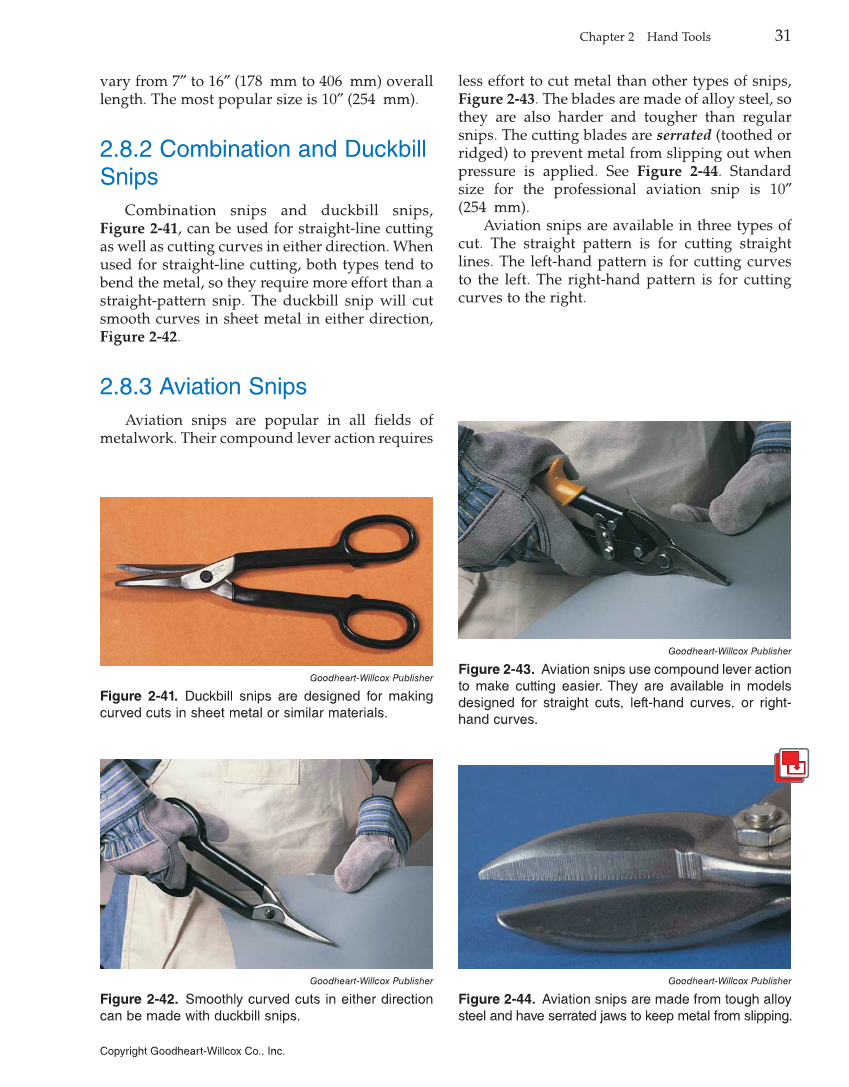less effort to cut metal than other types of snips, Figure 2-43. The blades are made of alloy steel, so they are also harder and tougher than regular snips. The cutting blades are serrated (toothed or ridged) to prevent metal from slipping out when pressure is applied. See Figure 2-44. Standard size for the professional aviation snip is 10″ (254 mm). Aviation snips are available in three types of cut. The straight pattern is for cutting straight lines. The left-hand pattern is for cutting curves to the left. The right-hand pattern is for cutting curves to the right. vary from 7″ to 16″ (178 mm to 406 mm) overall length. The most popular size is 10″ (254 mm). 2.8.2 Combination and Duckbill Snips Combination snips and duckbill snips, Figure 2-41, can be used for straight-line cutting as well as cutting curves in either direction. When used for straight-line cutting, both types tend to bend the metal, so they require more effort than a straight-pattern snip. The duckbill snip will cut smooth curves in sheet metal in either direction, Figure 2-42. 2.8.3 Aviation Snips Aviation snips are popular in all fields of metalwork. Their compound lever action requires Goodheart-Willcox Publisher Figure 2-41. Duckbill snips are designed for making curved cuts in sheet metal or similar materials. Goodheart-Willcox Publisher Figure 2-42. Smoothly curved cuts in either direction can be made with duckbill snips. Goodheart-Willcox Publisher Figure 2-43. Aviation snips use compound lever action to make cutting easier. They are available in models designed for straight cuts, left-hand curves, or right- hand curves. Goodheart-Willcox Publisher Figure 2-44. Aviation snips are made from tough alloy steel and have serrated jaws to keep metal from slipping. Chapter 2 Hand Tools 31 Copyright Goodheart-Willcox Co., Inc.
